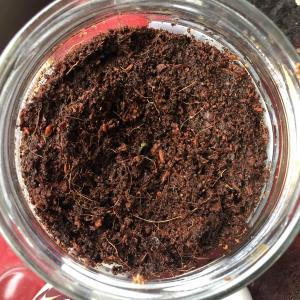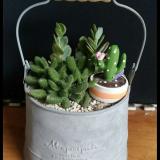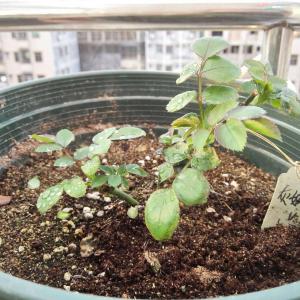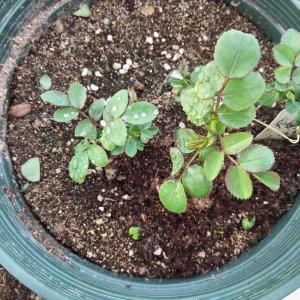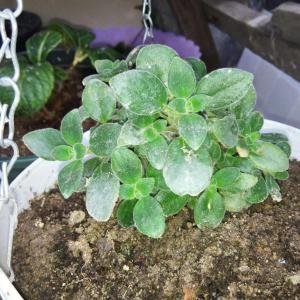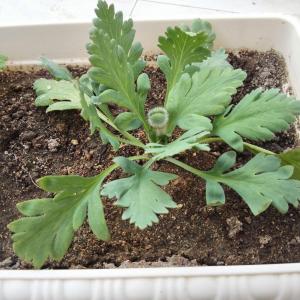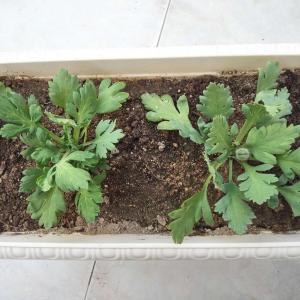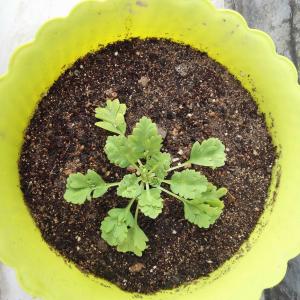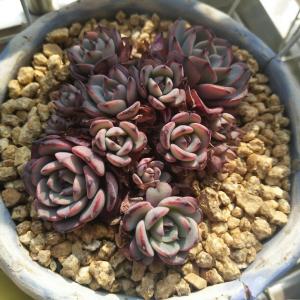文章
Miss Chen
2018年03月07日

Description: This is a perennial herbaceous vine up to 10' long that often climbs over other plants, shrubs, and fences. The twining stems are light green to red, glabrous to slightly hairy, and terete; alternate leaves are sparsely to moderately distributed along these stems. The leaves are about 2½-5" long and 1-2" across; they are sagittate-triangular or hastate-triangular in shape, while their margins are smooth and slightly ciliate. The basal lobes of these leaves are rather angular and squared-off in shape, although sometimes they are more rounded. The sinuses of the leaves are strongly indented between the basal lobes and either flattened or rounded. The upper leaf surface is medium green and glabrous (or nearly so), while the lower leaf surface is light green and glabrous to finely hairy. The slender petioles are about one-half as long as the leaves. The large buds produce flowers with funnelform corollas that are 2-3" across and similarly long; they are slightly 5-lobed. These corollas are usually white, although sometimes they are pale pink with spreading white stripes. However, deep within their throats the corollas are yellow.
At the base of each flower, there are 5 light green sepals that are largely hidden by a pair of large bracts. These bracts are light to medium green (often with reddish margins), broadly ovate in shape, keeled, and about ½-1½" long. Within the throat of each corolla, there is a white style with a pair of stigmata and 5 stamens (the latter adhere to the corolla). Usually the flowers are produced individually from the axils of the leaves, although there exists one subspecies of Hedge Bindweed (ssp. silvatica) that produces flowers in pairs from the axils of the leaves. The slender peduncles and/or pedicels of these flowers are shorter than the leaves. The flowers open during the morning and usually close at around noon, although they may remain open longer on cloudy days. The blooming period occurs intermittently during the summer for about 1-3 months. However, individual flowers last only a single day. Afterwards, the flowers are replaced by broadly ovoid seed capsules a little less than ½" (about 8-10 mm.) across. At maturity, these capsules split open to release their seeds (2-4 seeds per capsule). These seeds are dull brown to black, 3-angled (two flat sides & one rounded side), and rather irregular in shape; they are a little less than ¼" (about 4-5 mm.) long. The root system is fibrous and rhizomatous, and it may extend into the ground up to 10'. Hedge Bindweed spreads by clonal offshoots from its rhizomes or by reseeding itself.

Cultivation: This is an adaptable vine, preferring full to partial sun and moist to mesic conditions. It tolerates poor soil, often flourishing in areas that are gravelly or sandy. Hedge Bindweed readily climbs a trellis, fences, and neighboring plants, while in open areas it sprawls haphazardly across the ground. The climbing ability is the result of the stems twining tightly about slender objects. This vine can spread aggressively and become a nuisance in some locations. It is known to produce allelopathic chemicals that inhibit the growth of other plants.
Range & Habitat: The native Hedge Bindweed is common in most areas of Illinois, especially in the central and northern sections of the state (see Distribution Map). This vine is considered a noxious weed in some states, although it is not listed as such in Illinois. In addition to its wide distribution in North America, Hedge Bindweed is also native to Eurasia. It is likely that some populations of this species within the state have been introduced from other areas of North America or Eurasia. Habitats include edges of moist to mesic prairies, railroad prairies, thickets, woodland borders, open floodplain areas along lakes and rivers, edges of cropland, abandoned fields, fence rows, roadsides, areas along railroads, poorly maintained hedges, and urban waste areas. Hedge Bindweed is more common in disturbed areas.

Faunal Associations: Long-tongued bees are the primary pollinators of the flowers, including bumblebees, little carpenter bees (Ceratina spp.), and such oligolectic bees as Melitoma taurea (Mallow Bee), Peponapis pruinosa pruinosa (Squash & Gourd Bee), and Cemolobus ipomoea (Morning Glory Bee). It is likely that day-flying Sphinx moths visit the flowers during the morning. These insects obtain primarily nectar from the flowers. Several species of tortoise beetles feed on the foliage of Hedge Bindweed and similar species in the Bindweed family, including Agroiconota bivittata (Striped Tortoise Beetle), Charidotella sexpunctata (Golden Tortoise Beetle), Chelymorpha cassidea (Argus Tortoise Beetle), Deloyala guttata (Mottled Tortoise Beetle), and Jonthonota nigripes (Black-legged Tortoise Beetle). Other insect feeders include Chaetocnema confinis (Sweet Potato Flea Beetle), Typophorus nigritus (Sweet Potato Leaf Beetle), larvae of Neolasioptera convolvuli (Bindweed Stem Gall Midge), larvae of Bedellia somnulentella (Morning Glory Leafminer Moth), and larvae of Emmelina monodactyla (Morning Glory Plume Moth). Mammalian herbivores tend to ignore this plant when other food sources are available as the foliage is toxic. To a limited extent, the Bobwhite Quail and Ring-Necked Pheasant eat the seeds.

Photographic Location: The photographs were taken along a railroad in Urbana, Illinois, and at the Red Bison Railroad Prairie in Savoy, Illinois.
Comments: Many varieties and subspecies of Hedge Bindweed have been described that vary in regards to such characteristics as the shape of the basal lobes of their leaves, the relative sizes of their sepals and floral bracts, the relative size of their corollas, and whether 1 or 2 flowers are produced per leaf axil. These varieties and subspecies are not further discussed here, although see Mohlenbrock (2002) for a dichotomous key to those that occur in Illinois. The flowers of Hedge Bindweed are large and showy when they are fully open. They are just as attractive as many cultivated varieties of Ipomoea purpurea (Common Morning Glory). Hedge Bindweed can be readily distinguished from this latter species by the shape of its leaves, which are sagittate-triangular or hastate-triangular with angular to rounded basal lobes. In contrast, the leaves of Common Morning Glory and 2 native species, Ipomoea pandurata (Wild Sweet Potato) and Ipomoea lacunosa (Small White Morning Glory), are more cordate in shape. Another common species, Convolvulus arvensis (Field Bindweed), differs by having smaller sagittate leaves with narrow basal lobes, and its funnelform flowers are also smaller in size (less than 1½" across).
At the base of each flower, there are 5 light green sepals that are largely hidden by a pair of large bracts. These bracts are light to medium green (often with reddish margins), broadly ovate in shape, keeled, and about ½-1½" long. Within the throat of each corolla, there is a white style with a pair of stigmata and 5 stamens (the latter adhere to the corolla). Usually the flowers are produced individually from the axils of the leaves, although there exists one subspecies of Hedge Bindweed (ssp. silvatica) that produces flowers in pairs from the axils of the leaves. The slender peduncles and/or pedicels of these flowers are shorter than the leaves. The flowers open during the morning and usually close at around noon, although they may remain open longer on cloudy days. The blooming period occurs intermittently during the summer for about 1-3 months. However, individual flowers last only a single day. Afterwards, the flowers are replaced by broadly ovoid seed capsules a little less than ½" (about 8-10 mm.) across. At maturity, these capsules split open to release their seeds (2-4 seeds per capsule). These seeds are dull brown to black, 3-angled (two flat sides & one rounded side), and rather irregular in shape; they are a little less than ¼" (about 4-5 mm.) long. The root system is fibrous and rhizomatous, and it may extend into the ground up to 10'. Hedge Bindweed spreads by clonal offshoots from its rhizomes or by reseeding itself.

Cultivation: This is an adaptable vine, preferring full to partial sun and moist to mesic conditions. It tolerates poor soil, often flourishing in areas that are gravelly or sandy. Hedge Bindweed readily climbs a trellis, fences, and neighboring plants, while in open areas it sprawls haphazardly across the ground. The climbing ability is the result of the stems twining tightly about slender objects. This vine can spread aggressively and become a nuisance in some locations. It is known to produce allelopathic chemicals that inhibit the growth of other plants.
Range & Habitat: The native Hedge Bindweed is common in most areas of Illinois, especially in the central and northern sections of the state (see Distribution Map). This vine is considered a noxious weed in some states, although it is not listed as such in Illinois. In addition to its wide distribution in North America, Hedge Bindweed is also native to Eurasia. It is likely that some populations of this species within the state have been introduced from other areas of North America or Eurasia. Habitats include edges of moist to mesic prairies, railroad prairies, thickets, woodland borders, open floodplain areas along lakes and rivers, edges of cropland, abandoned fields, fence rows, roadsides, areas along railroads, poorly maintained hedges, and urban waste areas. Hedge Bindweed is more common in disturbed areas.

Faunal Associations: Long-tongued bees are the primary pollinators of the flowers, including bumblebees, little carpenter bees (Ceratina spp.), and such oligolectic bees as Melitoma taurea (Mallow Bee), Peponapis pruinosa pruinosa (Squash & Gourd Bee), and Cemolobus ipomoea (Morning Glory Bee). It is likely that day-flying Sphinx moths visit the flowers during the morning. These insects obtain primarily nectar from the flowers. Several species of tortoise beetles feed on the foliage of Hedge Bindweed and similar species in the Bindweed family, including Agroiconota bivittata (Striped Tortoise Beetle), Charidotella sexpunctata (Golden Tortoise Beetle), Chelymorpha cassidea (Argus Tortoise Beetle), Deloyala guttata (Mottled Tortoise Beetle), and Jonthonota nigripes (Black-legged Tortoise Beetle). Other insect feeders include Chaetocnema confinis (Sweet Potato Flea Beetle), Typophorus nigritus (Sweet Potato Leaf Beetle), larvae of Neolasioptera convolvuli (Bindweed Stem Gall Midge), larvae of Bedellia somnulentella (Morning Glory Leafminer Moth), and larvae of Emmelina monodactyla (Morning Glory Plume Moth). Mammalian herbivores tend to ignore this plant when other food sources are available as the foliage is toxic. To a limited extent, the Bobwhite Quail and Ring-Necked Pheasant eat the seeds.

Photographic Location: The photographs were taken along a railroad in Urbana, Illinois, and at the Red Bison Railroad Prairie in Savoy, Illinois.
Comments: Many varieties and subspecies of Hedge Bindweed have been described that vary in regards to such characteristics as the shape of the basal lobes of their leaves, the relative sizes of their sepals and floral bracts, the relative size of their corollas, and whether 1 or 2 flowers are produced per leaf axil. These varieties and subspecies are not further discussed here, although see Mohlenbrock (2002) for a dichotomous key to those that occur in Illinois. The flowers of Hedge Bindweed are large and showy when they are fully open. They are just as attractive as many cultivated varieties of Ipomoea purpurea (Common Morning Glory). Hedge Bindweed can be readily distinguished from this latter species by the shape of its leaves, which are sagittate-triangular or hastate-triangular with angular to rounded basal lobes. In contrast, the leaves of Common Morning Glory and 2 native species, Ipomoea pandurata (Wild Sweet Potato) and Ipomoea lacunosa (Small White Morning Glory), are more cordate in shape. Another common species, Convolvulus arvensis (Field Bindweed), differs by having smaller sagittate leaves with narrow basal lobes, and its funnelform flowers are also smaller in size (less than 1½" across).
0
0
文章
Miss Chen
2018年03月02日

Description: This twining herbaceous vine is up to 10' long, clambering over adjacent shrubs and herbaceous vegetation. The twining stems are light green, terete, and glabrous to minutely pubescent. At intervals along these stems, there occurs alternate compound leaves that are odd-pinnate with 3-7 leaflets (usually 5 leaflets and rarely 3 leaflets). The leaflets are 1½–3½" (4–9 cm.) long and ¾–2¼" (2–5.5 cm.) across; they are lanceolate, oblong-lanceolate, ovate, or broadly ovate in shape with toothless (entire) margins. The upper leaflet surface is medium to dark green and hairless, while the lower leaflet surface is either light green or whitened green and hairless to minutely pubescent. Leaflet venation is pinnate. The leaflets have short light green petiolules (less than ¼" or 6 mm.) that are hairless to minutely pubescent. The petioles and rachises (central stalks) of the compound leaves are light green, narrowly furrowed above, convex below, and hairless to minutely pubescent. The foliage of this vine contains a milky sap.
From the axils of the compound leaves, there occasionally develops racemes of flowers that are 2–6" (5–15 cm.) in length; the basal stalks of these racemes are up to 3" long, light green, terete, and hairless to minutely hairy. Flowers are are moderately to densely distributed along these racemes. Each flower has 5 petals forming an ascending standard with an upper keel, a pair of lower lateral wings, and a lower keel that curls upward. These petals are light to moderate maroon (brownish red to brownish purple) toward the front of the flower; toward the back of the flower, they are either a similar shade of maroon or somewhat whitened. The ascending standard functions as a hood over the other floral parts; it has an orbicular shape, but with a sharp keel along its upper side. The standard has either a short, upright, and thickened appendage at the outer tip of its keel, or such an appendage is lacking. Near the throat of the flower, the standard has 2 bands of diagonal black stripes on its inner side. The lower-lateral wings extend forward a shorter distance than the standard above; they are oblanceolate to obovate in shape. The lower keel (consisting of two folded petals) is shaped like an upward scythe with a whitish outer edge.

The short-tubular calyx at the base of the flower is light green or light to medium maroon; it is glabrous to finely short-pubescent. Along the outer rim of the calyx, are 5 shallow and irregular lobes or teeth. The floral rachis (central stalk of the raceme) is light green, terete, hairless to finely short-pubescent, and bumpy from small tubercles; these tubercles are extra-floral nectaries that secret droplets of nectar shortly after the flowers and their pedicels become detached from the floral rachis. The very short pedicels of the flowers are light green, terete, and glabrous to finely short-pubescent. The blooming period occurs from mid-summer to early autumn, lasting about 2 months for a colony of vines. Afterwards, fertile flowers are replaced by slender cylindrical seedpods about 2-4" (5–10 cm.) long and 0.2" (5 mm.) across that are light green to yellowish green; these seedpods are often slightly curved (up or down) and slightly compressed along their sides. However, some vines are sterile and they don't produce seedpods after the flowers bloom.Distribution Map The seedpods each contain several seeds; eventually they divide into 2 parts, ejecting their seeds. Fresh individual seeds are medium maroon with an inflated reniform shape; dried seeds become dark brown and more chunky. The root system is fibrous, long-rhizomatous, and tuberous; the tubers are arranged at intervals along the rhizomes like knotted ropes. Individual tubers are ½–3" long and ovoid to globoid in shape; they have brown exteriors and white interiors. This vine reproduces primarily (or even entirely) by its tuberous rhizomes, forming clonal vines. A vine with fertile flowers and seedpods can also reproduce by reseeding itself.
Cultivation: The preference is light shade to full sun, moist conditions, and loamy, gravelly, or sandy soil containing some organic matter. The root system of this vine fixes atmospheric nitrogen in the soil. This vine may fail to bloom during some years, and when it blooms the flowers often fail to produce seedpods. It can be easily propagated by digging up the tubers of the root system and planting them elsewhere.
Range & Habitat: The native Groundnut (Apios americana) is occasional throughout Illinois. Compared to the past, populations of this vine may have declined because of habitat destruction. It is widely distributed in the eastern half of the United States and southeastern Canada. Habitats include moist to mesic woodlands, typical thickets and sandy thickets, typical sloughs and sandy sloughs, moist prairies and moist meadows, typical seeps and gravelly seeps, banks of streams, and edges of fens. This vine is found in average to high quality natural areas.
Faunal Associations: The flowers are visited primarily by bees for nectar and, to a lesser extent, pollen. This includes honeybees, bumblebees, leaf-cutting bees (Megachile spp.), and Halictid bees. Leaf-cutting bees are considered the most important cross-pollinators of the flowers. Yellow jackets (Vespula spp.) have also been reported to visit the flowers to a lesser extent (see Robertson, 1929; Bruneau & Anderson, 1994). A claim has been made, on the basis of the structure and coloration of the flowers, that flies are likely to be the primary pollinators of the flowers (Westercamp & Paul, 1993), but this hypothesis has not been substantiated by empirical observation. Several species of ants have been observed to visit the tuberculous extra-floral nectaries on the central stalks of the floral racemes (Harvey, 2009).

Other insects feed on the leaves of Groundnut (Apios americana). This includes the leaf-mining larvae of Pachyschelus schwarzi (a metallic wood-boring beetle), leaf-mining larvae of Cerotoma trifurcata (Bean Leaf Beetle) and Odontota scapularis (Orange-shouldered Leafminer Beetle), and leaf-eating caterpillars of Epargyreus clarus (Silver-spotted Skipper) and Thorybes bathyllus (Southern Cloudywing); see MacRae (1991), Clark et al. (2004), and Barnes (1999). Among vertebrate animals, White-tailed Deer have been observed to feed on the foliage of this vine, and it has been considered a possible source of forage for goats (Morales et al., 2009). Both the seeds and tubers are edible to humans, and they were considered an excellent source of food by both early pioneers and Amerindians. Compared to other commonly eaten tubers and root vegetables, the tubers of Groundnut are unusually high in protein. This vine also provides excellent protective cover for many small to medium-sized mammals, birds, and other fauna.
Photographic Location: A moist thicket at Bluff Spring Fen Nature Preserve in Cook County, Illinois.

Comments: Groundnut (Apios americana) produces attractive, if somewhat untidy, foliage and unusually colored flowers. As an additional bonus, both seeds and tubers of this vine are edible to humans. Groundnut can be distinguished from similar herbaceous vines by the presence of alternate compound leaves that usually have 5 leaflets; its flowers are also very distinctive. There are both diploid and triploid Groundnut vines. The diploid vines are fertile and they are capable of producing seedpods, while triploid vines are infertile and they never produce seedpods. The infertile triploid vines are supposed to be more common toward the northern extent of Groundnut's range. Morphologically, these two groups of vines cannot be readily distinguished. One vine in Illinois, Amphicarpaea bracteata (Hog Peanut), could be confused with Groundnut, but the Hog peanut has compound leaves with only 3 leaflets (never 5 or 7) and its flowers are light pink and more cylindrical in shape. There is another species, Price's Groundnut (Apios priceana), that shares the same genus as the Groundnut. The uncommon Price's Groundnut occurs primarily to the south of Illinois, although it has been found in a single county in southern Illinois, where it is state-listed as endangered. Price's Groundnut can be distinguished by the pink or whitish pink coloration of its flowers, and by the long, upright, and thickened appendage that is located in front of the keel on the banner of its flowers. The root system of Price's Groundnut is said to produce larger tubers that are solitary, while the more common Groundnut produces smaller tubers that are arranged along individual rhizomes like a knotted rope. Other common names of Apios americana are American Groundnut and American Potato Bean.
From the axils of the compound leaves, there occasionally develops racemes of flowers that are 2–6" (5–15 cm.) in length; the basal stalks of these racemes are up to 3" long, light green, terete, and hairless to minutely hairy. Flowers are are moderately to densely distributed along these racemes. Each flower has 5 petals forming an ascending standard with an upper keel, a pair of lower lateral wings, and a lower keel that curls upward. These petals are light to moderate maroon (brownish red to brownish purple) toward the front of the flower; toward the back of the flower, they are either a similar shade of maroon or somewhat whitened. The ascending standard functions as a hood over the other floral parts; it has an orbicular shape, but with a sharp keel along its upper side. The standard has either a short, upright, and thickened appendage at the outer tip of its keel, or such an appendage is lacking. Near the throat of the flower, the standard has 2 bands of diagonal black stripes on its inner side. The lower-lateral wings extend forward a shorter distance than the standard above; they are oblanceolate to obovate in shape. The lower keel (consisting of two folded petals) is shaped like an upward scythe with a whitish outer edge.

The short-tubular calyx at the base of the flower is light green or light to medium maroon; it is glabrous to finely short-pubescent. Along the outer rim of the calyx, are 5 shallow and irregular lobes or teeth. The floral rachis (central stalk of the raceme) is light green, terete, hairless to finely short-pubescent, and bumpy from small tubercles; these tubercles are extra-floral nectaries that secret droplets of nectar shortly after the flowers and their pedicels become detached from the floral rachis. The very short pedicels of the flowers are light green, terete, and glabrous to finely short-pubescent. The blooming period occurs from mid-summer to early autumn, lasting about 2 months for a colony of vines. Afterwards, fertile flowers are replaced by slender cylindrical seedpods about 2-4" (5–10 cm.) long and 0.2" (5 mm.) across that are light green to yellowish green; these seedpods are often slightly curved (up or down) and slightly compressed along their sides. However, some vines are sterile and they don't produce seedpods after the flowers bloom.Distribution Map The seedpods each contain several seeds; eventually they divide into 2 parts, ejecting their seeds. Fresh individual seeds are medium maroon with an inflated reniform shape; dried seeds become dark brown and more chunky. The root system is fibrous, long-rhizomatous, and tuberous; the tubers are arranged at intervals along the rhizomes like knotted ropes. Individual tubers are ½–3" long and ovoid to globoid in shape; they have brown exteriors and white interiors. This vine reproduces primarily (or even entirely) by its tuberous rhizomes, forming clonal vines. A vine with fertile flowers and seedpods can also reproduce by reseeding itself.
Cultivation: The preference is light shade to full sun, moist conditions, and loamy, gravelly, or sandy soil containing some organic matter. The root system of this vine fixes atmospheric nitrogen in the soil. This vine may fail to bloom during some years, and when it blooms the flowers often fail to produce seedpods. It can be easily propagated by digging up the tubers of the root system and planting them elsewhere.
Range & Habitat: The native Groundnut (Apios americana) is occasional throughout Illinois. Compared to the past, populations of this vine may have declined because of habitat destruction. It is widely distributed in the eastern half of the United States and southeastern Canada. Habitats include moist to mesic woodlands, typical thickets and sandy thickets, typical sloughs and sandy sloughs, moist prairies and moist meadows, typical seeps and gravelly seeps, banks of streams, and edges of fens. This vine is found in average to high quality natural areas.
Faunal Associations: The flowers are visited primarily by bees for nectar and, to a lesser extent, pollen. This includes honeybees, bumblebees, leaf-cutting bees (Megachile spp.), and Halictid bees. Leaf-cutting bees are considered the most important cross-pollinators of the flowers. Yellow jackets (Vespula spp.) have also been reported to visit the flowers to a lesser extent (see Robertson, 1929; Bruneau & Anderson, 1994). A claim has been made, on the basis of the structure and coloration of the flowers, that flies are likely to be the primary pollinators of the flowers (Westercamp & Paul, 1993), but this hypothesis has not been substantiated by empirical observation. Several species of ants have been observed to visit the tuberculous extra-floral nectaries on the central stalks of the floral racemes (Harvey, 2009).

Other insects feed on the leaves of Groundnut (Apios americana). This includes the leaf-mining larvae of Pachyschelus schwarzi (a metallic wood-boring beetle), leaf-mining larvae of Cerotoma trifurcata (Bean Leaf Beetle) and Odontota scapularis (Orange-shouldered Leafminer Beetle), and leaf-eating caterpillars of Epargyreus clarus (Silver-spotted Skipper) and Thorybes bathyllus (Southern Cloudywing); see MacRae (1991), Clark et al. (2004), and Barnes (1999). Among vertebrate animals, White-tailed Deer have been observed to feed on the foliage of this vine, and it has been considered a possible source of forage for goats (Morales et al., 2009). Both the seeds and tubers are edible to humans, and they were considered an excellent source of food by both early pioneers and Amerindians. Compared to other commonly eaten tubers and root vegetables, the tubers of Groundnut are unusually high in protein. This vine also provides excellent protective cover for many small to medium-sized mammals, birds, and other fauna.
Photographic Location: A moist thicket at Bluff Spring Fen Nature Preserve in Cook County, Illinois.

Comments: Groundnut (Apios americana) produces attractive, if somewhat untidy, foliage and unusually colored flowers. As an additional bonus, both seeds and tubers of this vine are edible to humans. Groundnut can be distinguished from similar herbaceous vines by the presence of alternate compound leaves that usually have 5 leaflets; its flowers are also very distinctive. There are both diploid and triploid Groundnut vines. The diploid vines are fertile and they are capable of producing seedpods, while triploid vines are infertile and they never produce seedpods. The infertile triploid vines are supposed to be more common toward the northern extent of Groundnut's range. Morphologically, these two groups of vines cannot be readily distinguished. One vine in Illinois, Amphicarpaea bracteata (Hog Peanut), could be confused with Groundnut, but the Hog peanut has compound leaves with only 3 leaflets (never 5 or 7) and its flowers are light pink and more cylindrical in shape. There is another species, Price's Groundnut (Apios priceana), that shares the same genus as the Groundnut. The uncommon Price's Groundnut occurs primarily to the south of Illinois, although it has been found in a single county in southern Illinois, where it is state-listed as endangered. Price's Groundnut can be distinguished by the pink or whitish pink coloration of its flowers, and by the long, upright, and thickened appendage that is located in front of the keel on the banner of its flowers. The root system of Price's Groundnut is said to produce larger tubers that are solitary, while the more common Groundnut produces smaller tubers that are arranged along individual rhizomes like a knotted rope. Other common names of Apios americana are American Groundnut and American Potato Bean.
0
0



